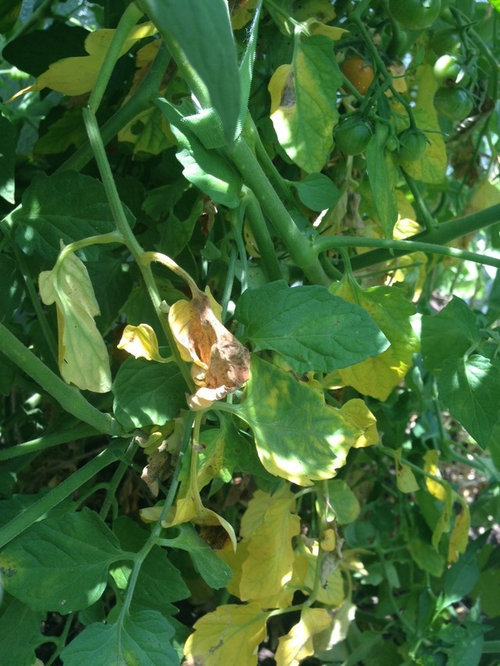salt damage, leaf mold, nutrient deficiency or all three?
slowjane CA/ Sunset 21
9 years ago
Related Stories

GARDENING GUIDESNew Ways to Think About All That Mulch in the Garden
Before you go making a mountain out of a mulch hill, learn the facts about what your plants and soil really want
Full Story
FARM YOUR YARDHow to Get Good Soil for Your Edible Garden
The nutrients in your soil feed the plants that feed you. Here are tips on getting it right — just in time for planting season
Full Story
EDIBLE GARDENSSummer Crop: How to Grow Blueberries
Plant blueberries in spring or fall for garden beauty through three seasons — and a sweet superfood in summer
Full Story
GARDENING GUIDESWhat's Wrong With My Plant? Leaves Often Hold the Clues
Learn how to identify common plant ailments by reading their leaves
Full Story
FARM YOUR YARDHow to Farm Your Parking Strip
Get an up-close look at a thriving street-side edible garden, one of many sprouting up in Seattle
Full Story
GARDENING GUIDESHow to Keep Your Citrus Trees Well Fed and Healthy
Ripe for some citrus fertilizer know-how? This mini guide will help your lemon, orange and grapefruit trees flourish
Full Story
KITCHEN OF THE WEEKKitchen of the Week: Goodbye, Honey Oak — Hello, Minty Green
After more than 30 years, the Kloesels revamped their space to reflect their rural country town and Victorian-style home
Full Story
GARDENING GUIDESGet on a Composting Kick (Hello, Free Fertilizer!)
Quit shelling out for pricey substitutes that aren’t even as good. Here’s how to give your soil the best while lightening your trash load
Full Story
GARDENING GUIDES6 Captivating Roses for an Alluringly Fragrant Garden
Perfume your garden with aromas from richly spicy to lightly sweet, without sacrificing an inch of color
Full Story
EDIBLE GARDENSGarden BFFs? Why Your Vegetables Are Begging for Companion Plants
Foster friendships among plants for protection from pests, pollination support and color camaraderie
Full StorySponsored
Columbus Area's Luxury Design Build Firm | 17x Best of Houzz Winner!
More Discussions








digdirt2
seysonn
Related Professionals
Braintree Landscape Contractors · Clearlake Landscape Contractors · Lebanon Landscape Contractors · Wallingford Landscape Contractors · Westchester Landscape Contractors · 07920 Landscape Contractors · North Hills Landscape Contractors · Arlington General Contractors · Easley General Contractors · Franklin General Contractors · Grain Valley Decks, Patios & Outdoor Enclosures · Kearns Decks, Patios & Outdoor Enclosures · Little Rock Decks, Patios & Outdoor Enclosures · New Lenox Decks, Patios & Outdoor Enclosures · Salisbury Decks, Patios & Outdoor Enclosuresslowjane CA/ Sunset 21Original Author
digdirt2
dodge59
slowjane CA/ Sunset 21Original Author
dodge59
slowjane CA/ Sunset 21Original Author
slowjane CA/ Sunset 21Original Author